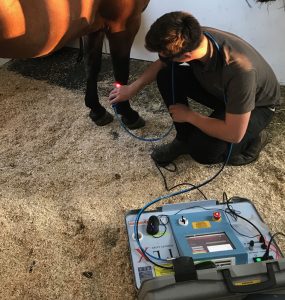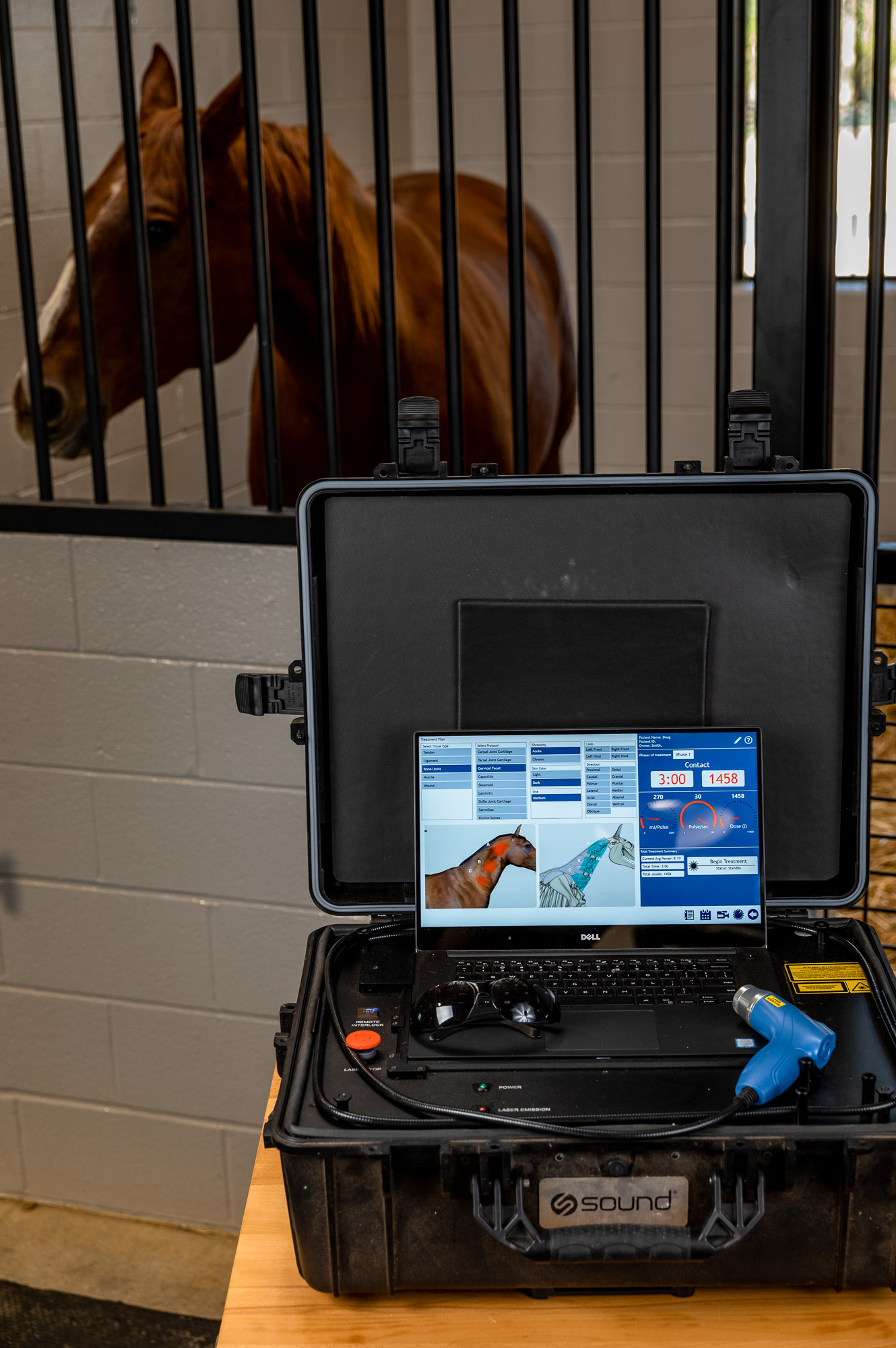Equine Therapy for Children: Emotional and Behavioral Support Discussed
Equine Therapy for Children: Emotional and Behavioral Support Discussed
Blog Article
Exploring the Conveniences of Laser Therapy in Equine Therapy for Enhanced Recovery
The introduction of laser treatment in equine therapy offers a promising avenue for boosting recuperation and total wellness. Specifically effective for soft cells injuries, laser treatment likewise plays a considerable role in managing persistent pain and improving blood circulation. Its capacity to enhance collagen manufacturing even more adds to cells honesty.
Exactly How Laser Therapy Works
Laser treatment, an innovative technique in equine therapy, operates by discharging specific wavelengths of light to penetrate cells and promote mobile procedures. This sophisticated modern technology takes advantage of the power of photons to engage with chromophores within the cells, activating photochemical reactions that enhance mobile metabolic rate. The key mechanism includes the absorption of light by mitochondrial chromophores, causing increased production of adenosine triphosphate (ATP), the cell's energy money.
The altitude in ATP levels increases different biological processes, consisting of enhanced healthy protein synthesis and cell expansion. Additionally, laser therapy regulates inflammatory feedbacks by reducing pro-inflammatory cytokines and boosting anti-inflammatory cytokines. This dual action aids in minimizing discomfort and advertising cells repair.

Advantages for Soft Tissue Injuries
When addressing soft cells injuries in horses, laser treatment uses a wide variety of advantages that dramatically boost recuperation end results. Soft cells injuries, including ligaments, ligaments, and muscles, prevail in equine professional athletes and often call for extensive healing durations. Laser therapy, or photobiomodulation, advertises cellular regrowth and enhances tissue repair work by promoting mitochondrial activity, therefore increasing the natural healing procedure.
One of the key advantages of laser therapy is its capability to reduce inflammation. By targeting the afflicted area with certain wavelengths, laser treatment minimizes the inflammatory response, decreasing swelling and connected pain. This anti-inflammatory effect is crucial in managing the preliminary phases of injury, where too much inflammation can restrain healing.

Furthermore, laser treatment stimulates the production of collagen, an essential healthy protein for keeping the integrity and flexibility of soft cells. Enhanced collagen synthesis speeds up the repair of damaged structures, lowering the risk of reinjury. Consequently, laser therapy provides a non-invasive, drug-free option for expediting the recovery of soft tissue injuries in equines.
Managing Chronic Pain
In the world of equine medical care, taking care of persistent discomfort provides a considerable difficulty, weblink frequently requiring complex methods for effective treatment. Chronic discomfort in equines can come from a range of resources, consisting of arthritis, laminitis, and various other degenerative problems. Traditional management methods, such as anti-inflammatory medications and physical treatment, have their values however can be restricted by adverse effects and irregular effectiveness.
Laser treatment has emerged as an encouraging adjunctive treatment for managing persistent pain in equines. This non-invasive method makes use of specific wavelengths of light to permeate tissues, advertising mobile repair service and minimizing swelling. By enhancing microcirculation and stimulating the release of endorphins, laser therapy can supply considerable discomfort alleviation without the unfavorable impacts typically associated with pharmaceuticals.
The ability to target particular discomfort sites precisely makes laser therapy a flexible tool in the detailed pain monitoring collection. As research proceeds to evolve, the combination of laser therapy in equine chronic discomfort monitoring holds considerable capacity for improving the top quality of life for impacted equines.
Enhancing Healing Times
Building on the promising end results observed hurting monitoring, laser company website treatment also reveals substantial capacity in enhancing healing times for equine clients. This modality functions by increasing cellular regrowth and improving blood circulation, which are vital factors in the healing procedure. The application of laser therapy stimulates the production of adenosine triphosphate (ATP), consequently boosting the power offered for cellular repair work and reducing inflammation.
Clinical studies have shown that steeds treated with laser therapy exhibit quicker recovery from musculoskeletal injuries, medical procedures, and soft tissue damage. The decrease in inflammation and discomfort not only help in faster cells repair yet likewise permits earlier and more effective recovery workouts. This is specifically beneficial for performance horses, where decreasing downtime is critical for keeping competitive timetables.
Furthermore, laser treatment can be Web Site specifically targeted to certain injury sites, ensuring that the therapeutic effects are local and potent. This precision lowers the probability of negative effects and advertises a lot more consistent recovery outcomes. Subsequently, equine vets are progressively including laser therapy into their therapy protocols, identifying its efficiency in accelerating recovery times and improving the overall healing process for equine clients.
Improving General Wellness
As laser treatment remains to obtain grip in equine medicine, its benefits extend past just injury healing, dramatically contributing to the total well-being of equines (Equine Therapy). This restorative method has actually shown efficacy in relieving persistent discomfort, minimizing inflammation, and advertising cellular regeneration. Such outcomes are not just crucial for recovery yet also enhance the lifestyle for equine clients, guaranteeing they remain active and material
Among the vital facets in which laser therapy help in enhancing overall well-being is with its analgesic effects. Discomfort monitoring is essential for steeds, especially those involved in competitive sporting activities or rigorous activities. By reducing pain, laser therapy enables these animals to do efficiently and reduces the risk of offsetting injuries.

Verdict
In summary, laser therapy presents a considerable advancement in equine treatment by stimulating mobile regeneration, minimizing swelling, and speeding up recovery procedures. Laser treatment emerges as an important tool for optimizing rehab and boosting the overall well-being of horses.
Report this page